3.4 Market structures
1/37
There's no tags or description
Looks like no tags are added yet.
Name | Mastery | Learn | Test | Matching | Spaced |
|---|
No study sessions yet.
38 Terms
Perfect competition diagram in the short run
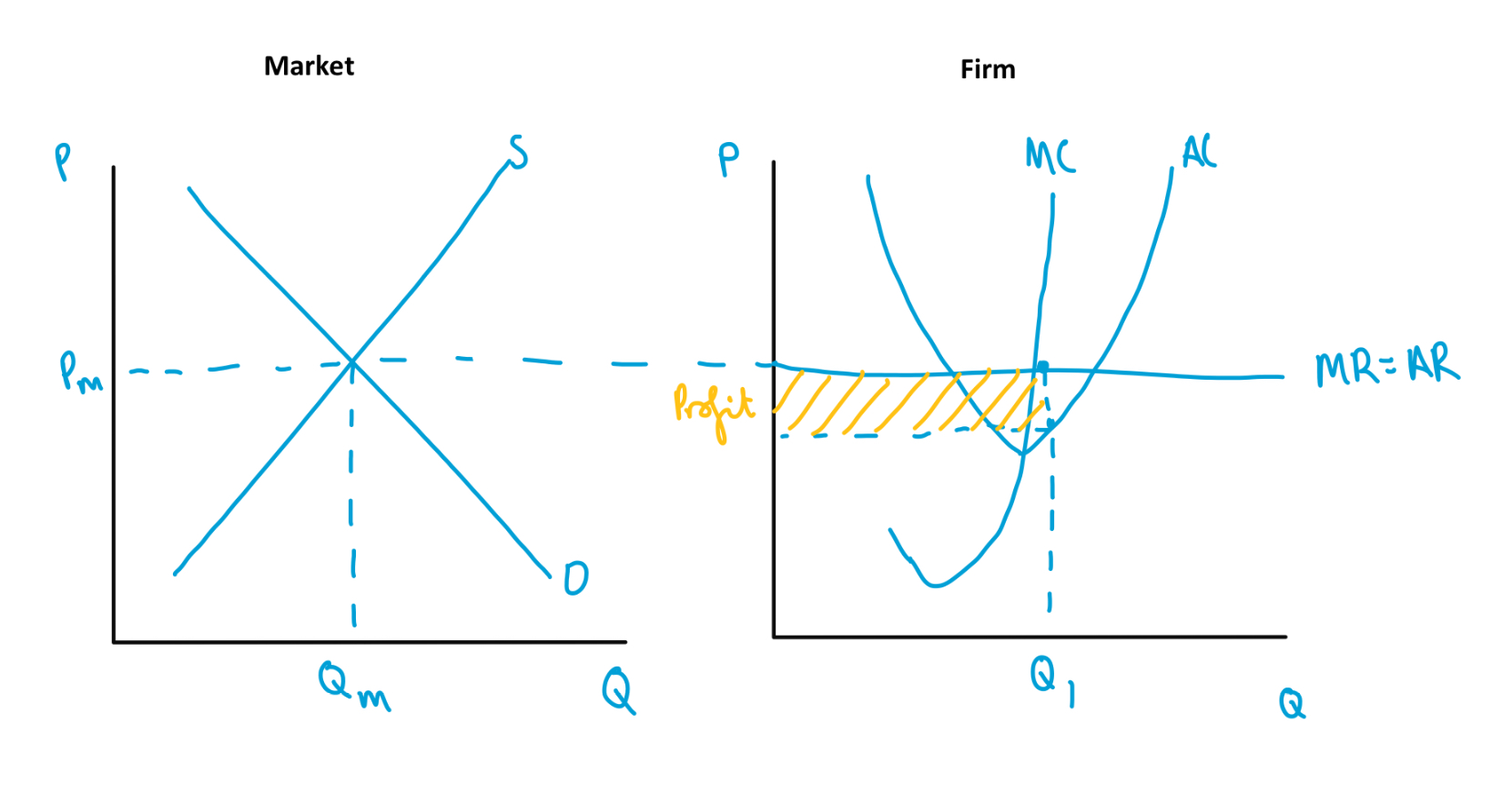
Perfect competition diagram in the long run
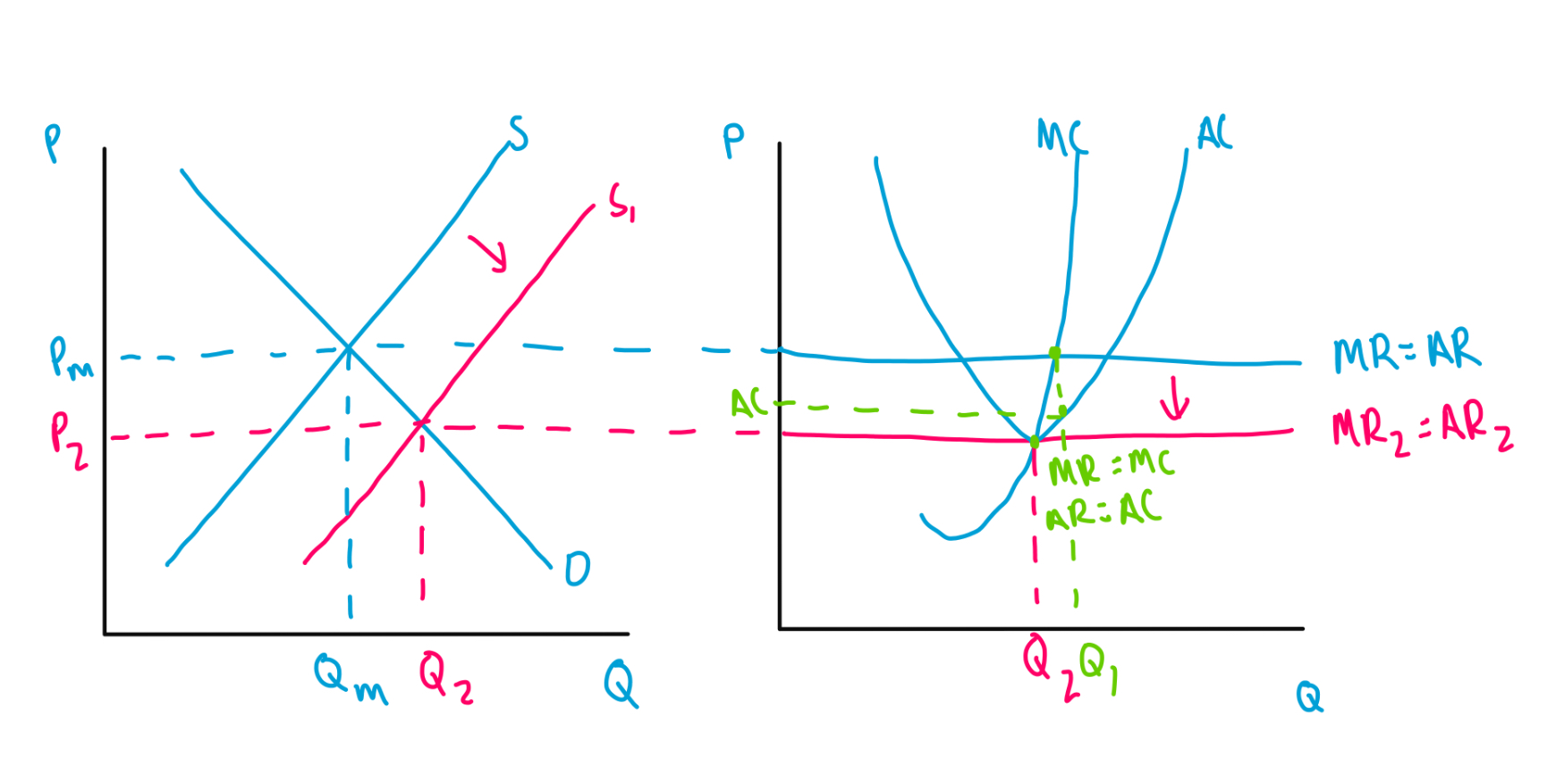
Perfect competition productive efficiency in short run
unlikely as not operating at bottom of AC curve
Perfect competition productive efficiency in long run
yes- firms cannot make a profit or loss in the long run, therefore must be operating at the bottom of the AC curve
Perfect competition allocative efficiency in short run
yes- as P=AR, AR=MR and MR=MC, P=MC, which is the condition for allocative efficiency
Perfect competition allocative efficiency in long run
yes- as P=AR, AR=MR and MR=MC, P=MC, which is the condition for allocative efficiency
Perfect competition dynamic efficiency in short run
no- profits are unlikely to be high enough to invest
and as firms have perfect information firms are not incentivised to innovate as other firms will copy them
Perfect competition dynamic efficiency in long run
no- firms can only make normal profit, so do not have enough to invest
and as firms have perfect information firms are not incentivised to innovate as other firms will copy them
Short run Monopolistic competition
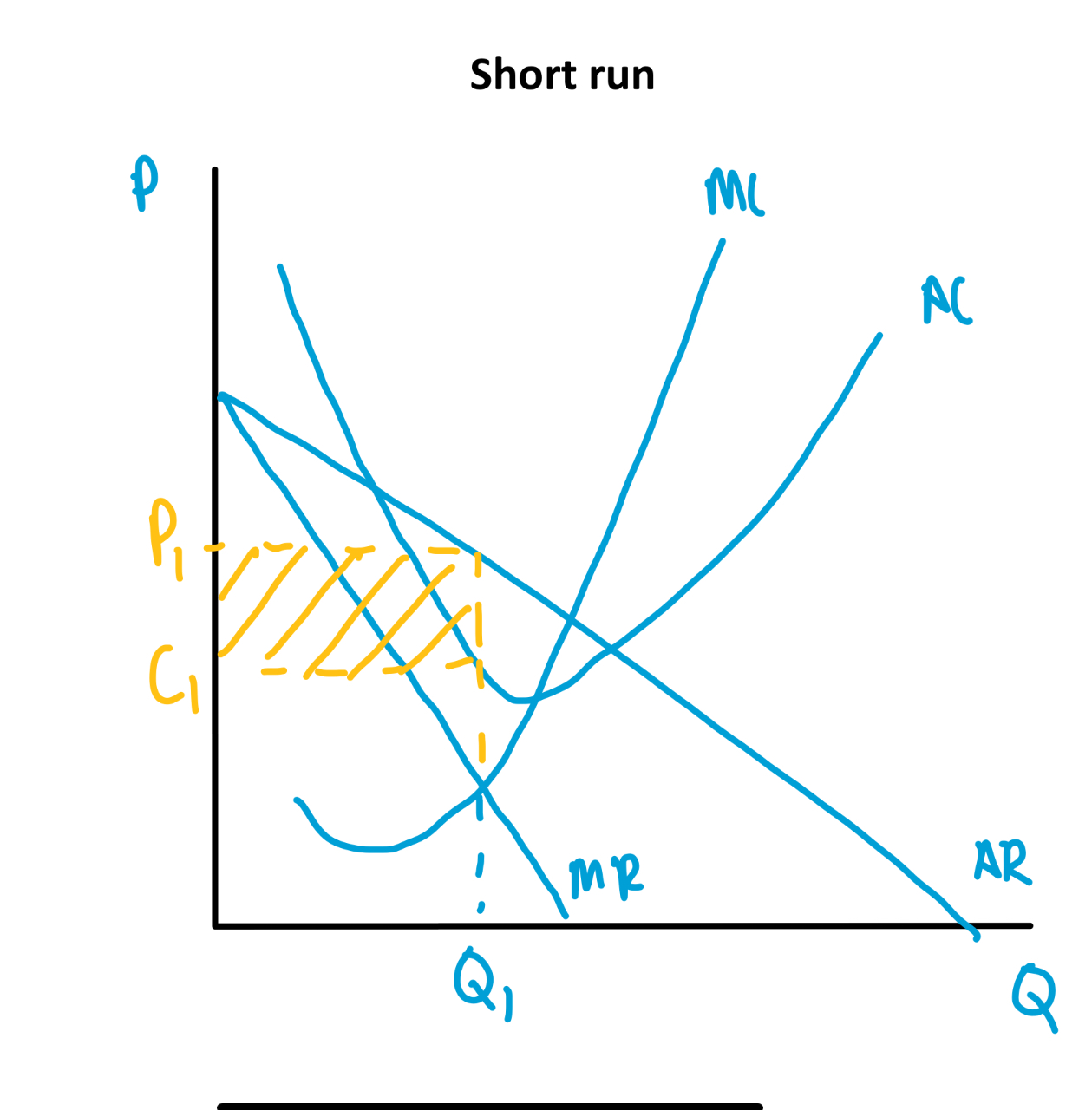
Long run Monopolistic competition
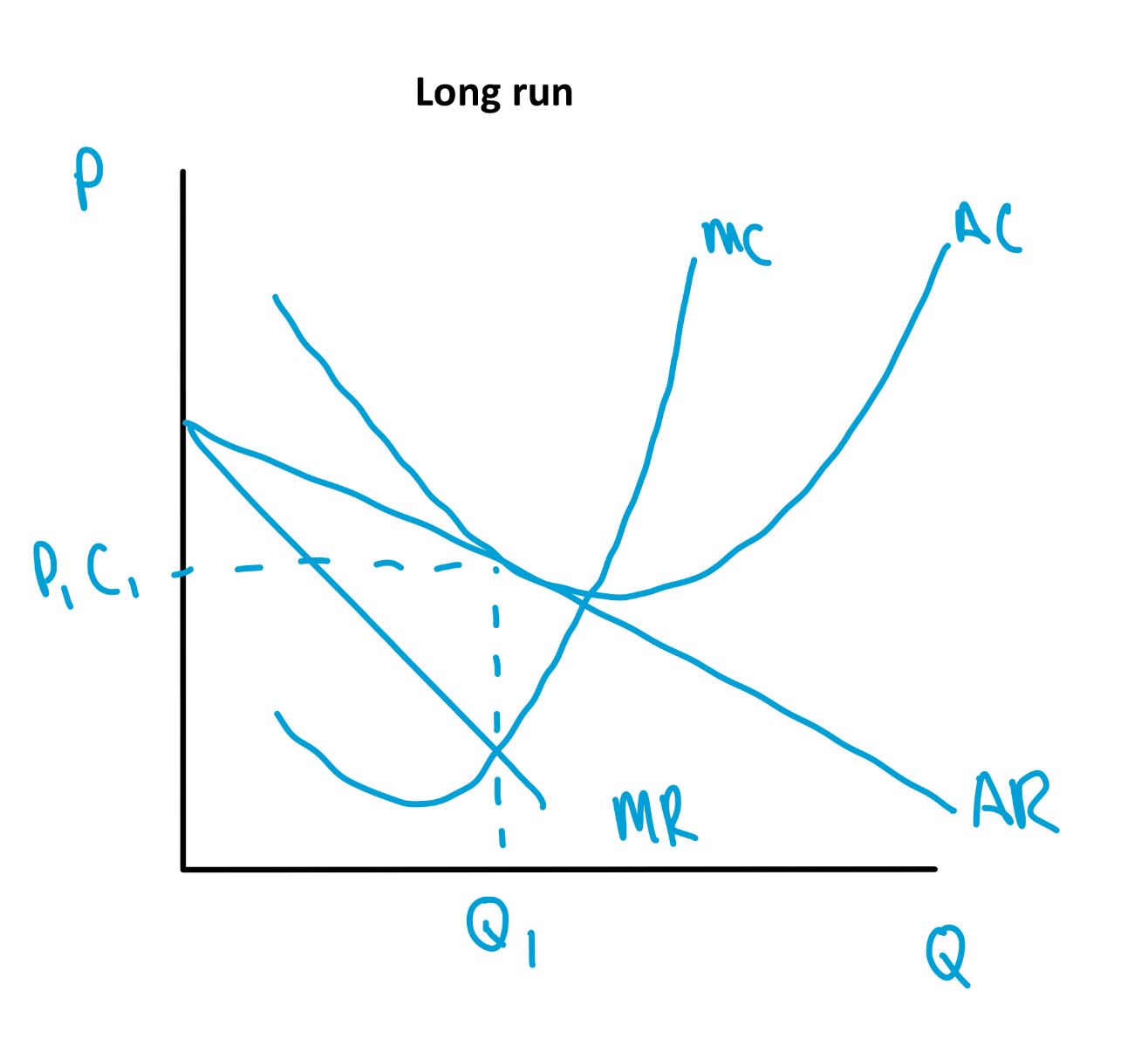
Example industries
restaurants
clothing stores
hairdresssers
nail salons
parcel delivery
Chain of analysis from short run to long run in monopolistic competition
AR and MR are steep in the short run as demand is more price inelastic for products
the existence of SNP incentivises more firms to enter the market, which is possible due to low barriers to entry
as firms enter the market, individual firms’ market share decreases
revenue curves/ demand curves shift in and left
there are more substitutes in the market, so demand becomes more price elastic
revenue curves become more shallow
revenue curves shift in until profits are normal, at which point firms stop entering the market
here AR=AC and this is the point at which firms are making normal profit
monopolistic competition productive efficiency in the short run
no as there is some differentiation between products
monopolistic competition productive efficiency in the long run
no- not perfect competition so firms are not forces to be productively efficient
monopolistic competition allocative efficiency in the short run
no as firms will set prices above MC
monopolistic competition allocative efficiency in the long run
no
monopolistic competition dynamic efficiency in the short run
small amount to differentiate products
monopolistic competition dynamic efficiency in the long run
no as there are no SNP
oligopoly kinked demand curve
How might firms in an oligopoly engage in non price competition
loyalty cards
branding
packaging
advertising
warranties
Why are firms interdependant
they have relatively few competitors, so study the pricing of them carefully
What is the Nash equilibrium
result from both firms choosing their dominant stratergy
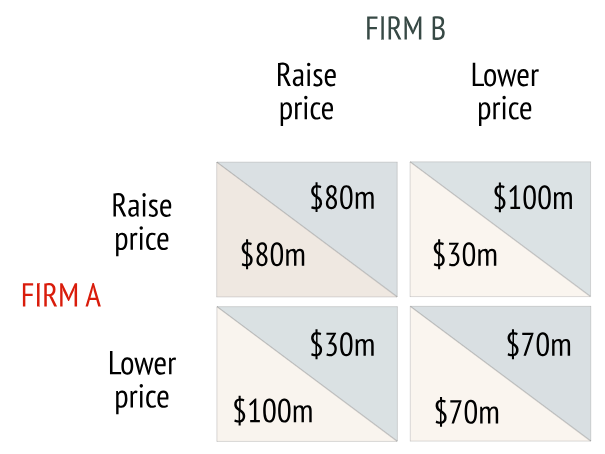
What would need to happen for both firms to stay at the raise price equilibrium
collusion
What might make collusion in a market more likely
fewer firms
homogenous products
similar cost structures
demand is price inelastic
high barriers to entry
why can a competitive oligopoly be beneficial for consumers
price stability
lower prices
dynamic efficiency
non price competition
why can a collusive oligopoly be bad for consumers
higher prices
limited dynamic efficiency
can restrict supply
Monopoly diagram
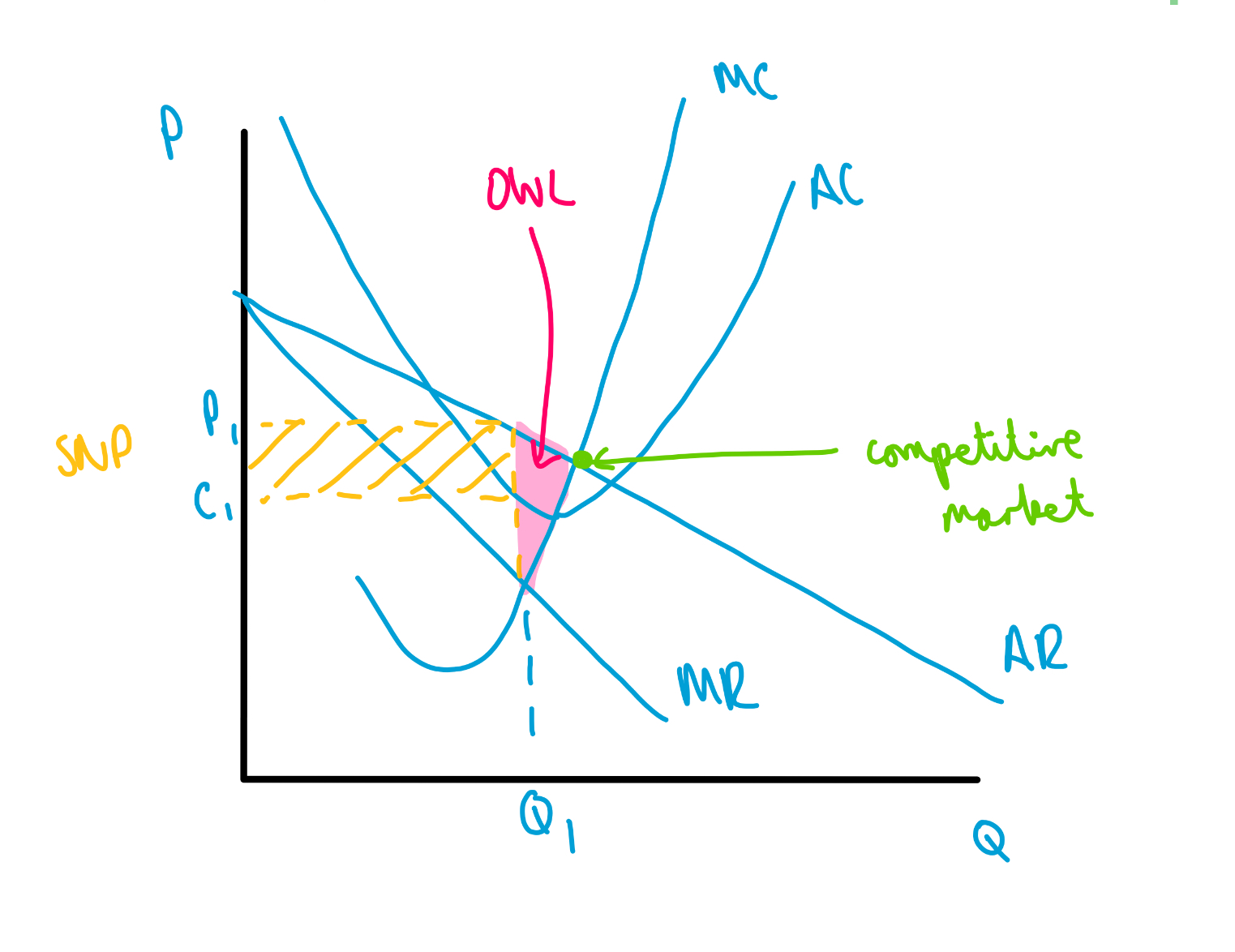
monopoly productive efficiency
unlikely to produce at the bottom of the AC curve as they can charge higher prices which consumers are forced to pay
monopoly allocative effiiciency
no as the point at which AR=MC is below the profit maximising point, so the good will be underconsumed
monopoly dyanmic efficiency
potentially due to presence of SNP, however unlikely due to lack of pressure from competition, depends on level of contestability
Natural Monopoly diagram
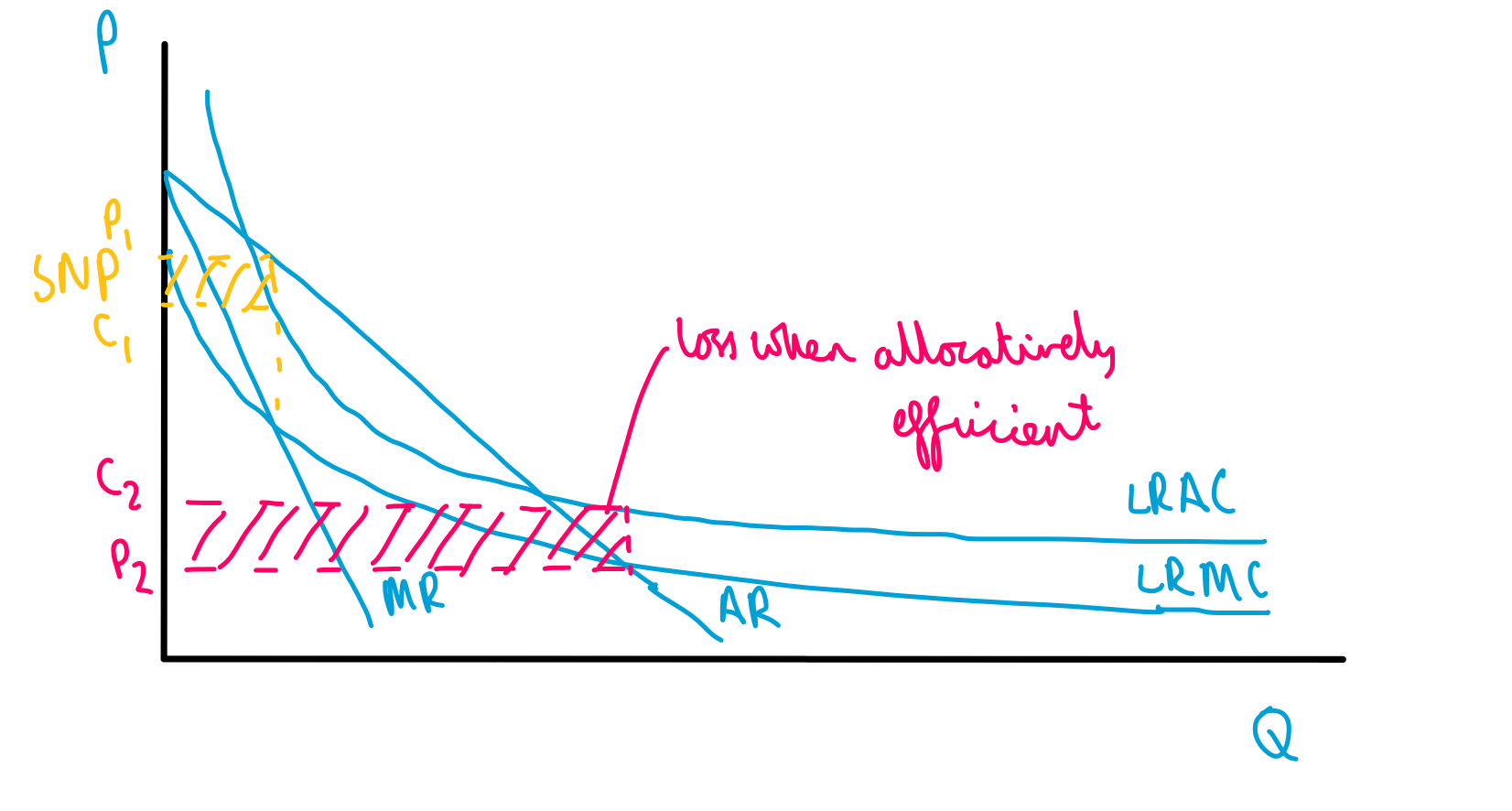
Why is LRAC downward sloping for a monopoly
economics of scale due to very high fixed costs and low marginal costs, as natural monopolies are often utilities
What is third degree price discrimination
when a seller charges different prices to different segments of customers for the same product
3 diagrams to show how third degree price discrimination is used in a market segment with price inelastic demand, price elastic demand and the overall marke
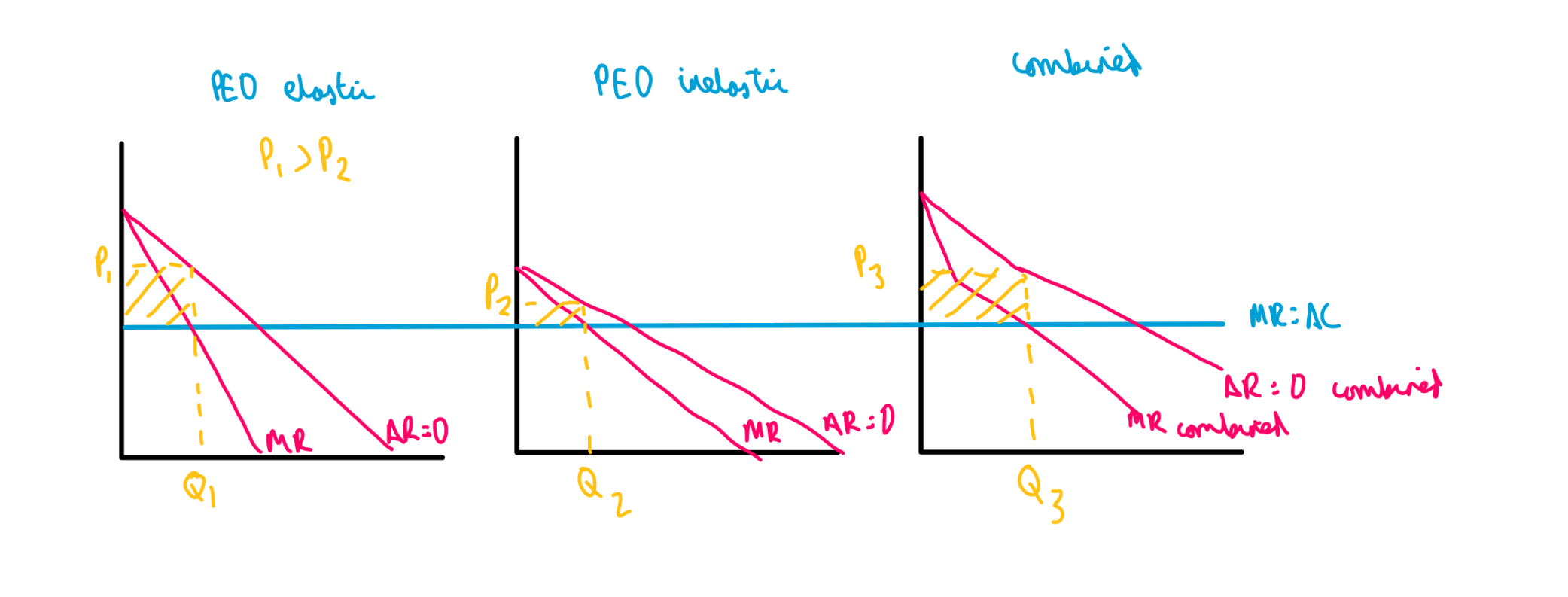
benefits to firms of price discrimination
increase revenue, might allow some firms to stay in business when they otherwise would have made a loss
benefits to consumers of price discrimination
spreads out demand eg for trains, reducing congestion
increases revenue for firms leading to SNP potential for dynamic efficiency and innovations
higher earners essentially subsidise lower earners
drawback to firms of price discrimination
administrative costs in separating the markets
drawback to consumers of price discrimination
some consumers will end up paying higher prices, which is likely to be allocatively inefficient
decline in consumer surplus
those paying lower prices may not be the poorest
profits could be used to finance predatory pricing